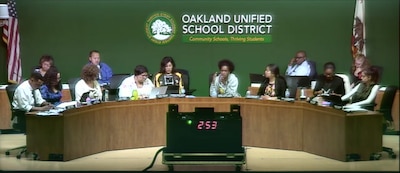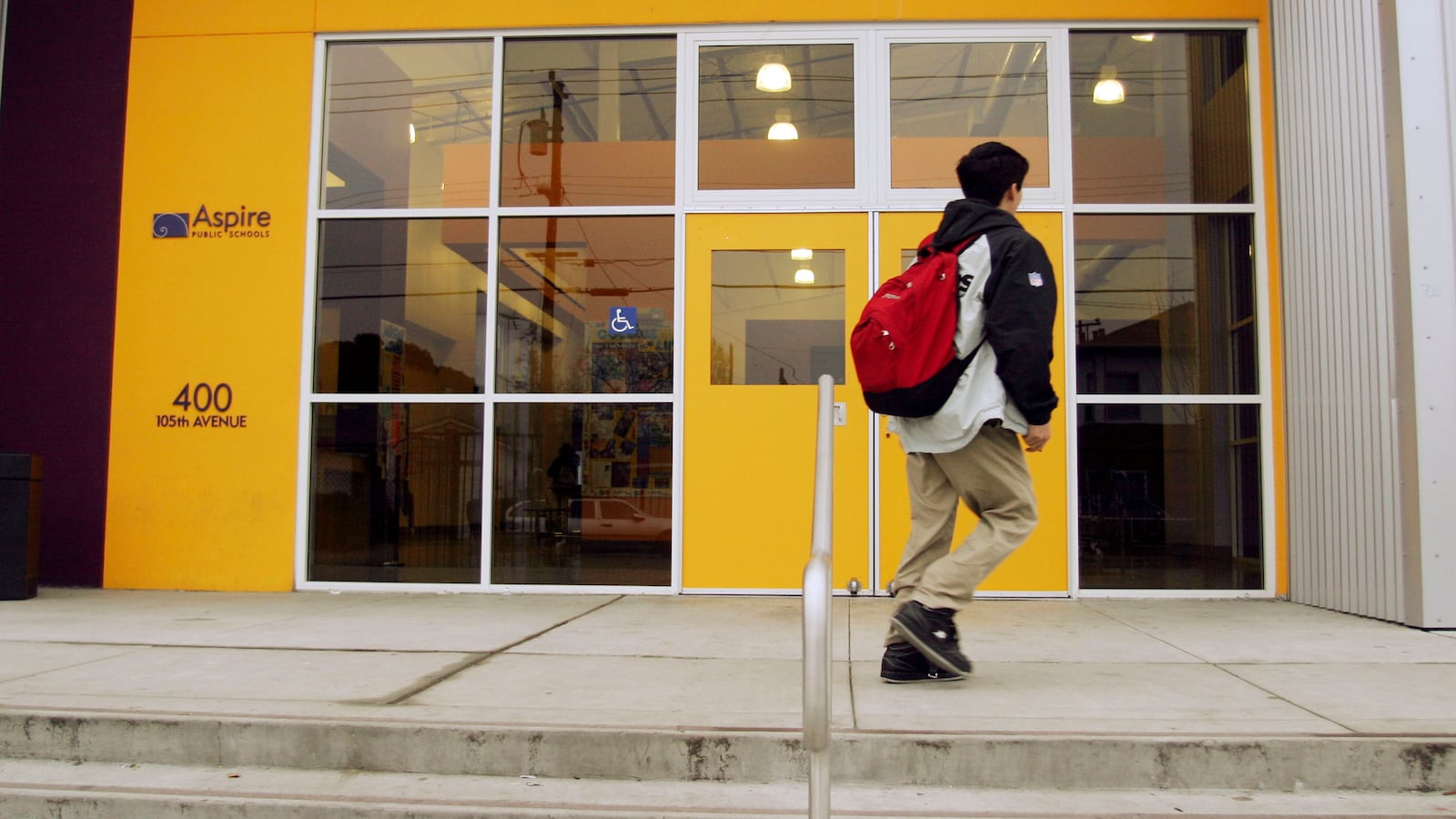How to balance the competing interests of district and charter schools is sparking vigorous debate.
That sentiment could apply to Newark or Indianapolis or Denver. But this month it’s Oakland, California, where school board members just told their superintendent to get to work on a plan to coordinate among all of the publicly funded schools in the city — including how they should enroll students and how many should exist.
It’s one step toward what some call the “portfolio model” of overseeing schools, which advocates are pushing in a growing number of cities.
How that will work in Oakland is unclear, particularly since the district doesn’t directly control the city’s charter schools. A number of observers say Oakland has too many schools for too few students, leaving district finances stretched too thin — and the key question remains which kinds of schools will go through the painful process of closing. The plan alludes to this issue, but doesn’t explain in detail how it will be addressed.
It’s a victory for GO Public Schools, a local nonprofit that created a campaign called 1Oakland to push for this kind of unified system of overseeing schools and backed the policy that was adopted.
The plan has already faced sharp criticism from teachers unions and others skeptical of charter schools, who say the plan won’t do enough to strengthen traditional public schools. But not all charter advocates are on board with the initiative, either — making it an example of how national divides among charter supporters are playing out locally.
“The whole point of this policy is to unite the community,” said Jody London, one of five board members who backed the policy. “Instead this has become a lightning rod.”
An effort to create more cohesion in a disjointed system
A recent Alameda County grand jury report laid out some of the challenges facing the city’s schools in stark terms. The district has big financial deficits, has too many schools, and is operating in an environment marked by distrust toward the charter sector, according to the analysis.
In the 50,000-student district, over a quarter of students attend charters. Past efforts at greater coordination including a proposed common enrollment system and an “equity pledge” have fizzled.

The “failure to support a unified effort at comprehensive reform is marching the district towards state takeover,” the report warned. (The district was taken over — and issued a $100 million loan — by the state in 2003. It still has a fiscal monitor appointed by the California Department of Education and is paying down the loan.)
The plan Oakland’s school board adopted last week nods toward some of these issues. It says the district needs to create “a fiscally sound number” of schools, and calls for more coordination around student enrollment and transportation. That includes efforts to ensure that charters serve similar students, “so that the highest needs students are not concentrated only in [district] schools.”
The policy also calls for stronger “oversight and accountability” of the charter schools the district oversees, and raised the possibility of providing district schools with charter-like autonomy.
The two-page document focused on broad ideas rather than nitty-gritty policies, instructing the district superintendent Kyla Johnson-Trammell to create a more detailed blueprint by November, which will be voted on in January 2019 after community feedback.
“The goal of this was … to have a public conversation and to bring the board to some consensus on its position on how schools, charter and district, should be in partnership and how they should co-exist,” James Harris, the school board member who introduced the proposal, told Chalkbeat a week before the vote.
Debate about the plan stretched over several months, as the policy went through multiple iterations and even a different name. (Harris said he had gone to a conference put on by the Center on Reinventing Public Education a few years ago where his “biggest takeaway [was] don’t use the word ‘portfolio’ because it’s such a hot button.”)
In some ways, the policy echoes the portfolio model vision, particularly with its emphasis on a single, coherent system of schools. Portfolio advocates typically want schools of all kinds to be held accountable by a central body that replicates successful schools, closes unsuccessful ones, and coordinates functions like enrollment across schools; a system that allows parents to choose from all kinds of schools; and lots of freedom for schools to make decisions about how to operate. Research on this approach is limited and mixed.
Mirella Rangel of GO Public Schools, which is part of a loosely connected network of groups that have supported the portfolio model, says she hopes Oakland’s plan will play out differently than it has in some other cities and pay special attention to the district’s disadvantaged students.
“That history of portfolio management in other cities … we’ve seen it happen to people, be market-driven,” she said.
Plan faces pushback on a number of fronts
The plan has drawn fierce criticism from skeptics of charter schools, who said the plan doesn’t have enough focus on supporting district schools that have lost students and funding to charters.
“We are rejecting a ‘system of schools’ concept and a ‘1 Oakland concept’ because they are euphemisms for an endless campaign to blur in the public’s mind the difference between charter and public schools — and there is a difference,” said Trish Gorham, the head of the local teachers union, at an earlier board meeting.
But in at least one way, the plan concedes one criticism of the charter sector — that charters aren’t serving the same share of needy students as the district. The plan requires the superintendent to determine how the district can push charters to serve similar numbers of special education students, newcomer students, foster students, and English learners.
A report commissioned by GO found that Oakland charters do serve substantially fewer students with disabilities and take many fewer students in the middle of school year than the district.
“I hear a lot of people who say, ‘That’s wrong,’” said Mirella Rangel of GO. “We’re actually trying to get the practices to change.”
Not everyone believes charters are open to changing.
“There is nothing stopping charter schools today from stopping the selective recruitment practices,” board member Shanthi Gonzales, who voted against the plan, said in an interview. “They want resources that they don’t have access to now, and I don’t believe they actually want to change anything.”
A common enrollment system for district and charters is used in some cities to address this issue. Common enrollment was also part of the 1Oakland campaign. But Both Rangel and Harris downplayed this possibility, which was proposed a few years ago by Oakland’s previous superintendent, Antwan Wilson, but faced blowback and was never implemented.
Another issue dividing Oakland schools observers: potential school closures.
Fiscal mismanagement, declining enrollment, the expansion of charter schools, and the creation of intentionally small schools with money from the Gates Foundation beginning nearly two decades ago has left the district in dire financial straits.
“Each of the last five superintendents has acknowledged that the district is operating too many schools, yet each has failed to convince the school board to make the difficult decisions in the face of community backlash,” said the grand jury report.
But which schools need to close?
“Some aspects of closures or consolidation need to happen in both sectors,” Rangel said. “I want to reiterate both.”
Critics fear traditional public schools will bear the brunt of that burden, though. That’s in part because it’s hard for the district to close charters: Though the district authorizes most of the city’s charter schools, charters may appeal a closure decision to the county and the state, which can overrule district decisions.
“You can’t close charter schools, so we know this policy will only apply to public schools,” Mike Hutchinson, founder of Oakland Public Education Network and a former school board candidate, told board members at a previous hearing.
Meanwhile, some charter school supporters are skeptical of GO’s efforts, too.
An initial draft of its 1Oakland plan proposed a two-year pause on new schools, including charters. That prompted a March email to local charter leaders criticizing the plan, on this and other fronts, from a California Charter Schools Association official.
“1Oakland’s ask drastically misses the point,” Max Daigh, a CCSA regional director, wrote.
The California Charter Schools Association stayed neutral on the policy Oakland’s board passed, even though CCSA and GO have been allies, working together to influence past school board races.
The groups say they maintain a strong working relationship, but their disagreement illustrates the difficult road ahead for a plan that hinges on coordination.
As to whether the CCSA and GO will partner again on the upcoming November school board election, “It’s not clear at this point,” said Rangel. “It’s definitely much more murky [and] complicated this year.”


